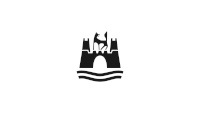Art in the cityscape
by Maik Ullmann
As a city with ambitions for a modern cultural policy, only very few people in the 1950s had the 'economic miracle city' of Wolfsburg in mind. However, various actors from the factory and the city began to use contemporary art to create a counterbalance to everyday working life in the "shanty town" for the inhabitants of the young VW city. As it turned out: a 'cold start' with success.
As the town, which was only founded in 1938 as a Nazi model settlement, had no artistic tradition to draw on, it made a virtue of necessity and promoted young art in a variety of ways. A visible expression of this was the awarding of the art prize junge stadt sieht junge kunst from 1959. At that time, various artists began to settle in Wolfsburg and set up their studios in the city's Renaissance Palace after being approached by Lord Mayor Uwe-Jens Nissen: The artists' collective Schloßstraße 8 was founded there in 1961. Heinrich Heidersberger and Gustav Kurt Beck, two internationally renowned artists, were among the founding members. They were joined by the Szaif-Pawlowa couple, Helga Pape and Paul Kurt Bartzsch, among others. Over the course of the 1960s, the group continued to grow with the addition of Katrin Brandt, the Siems couple and Rudolf Mauke. It existed in various constellations until the late 1980s.
A council resolution was also passed in 1959 to regulate "art in architecture", according to which funds had to be set aside for the artistic design of new public buildings in proportion to the construction costs. The resolution is also regarded as the beginning of the field of "art in the cityscape". This helped the group of artists to increasingly make their artistic mark on the city. At the same time, it helped to establish the city's reputation as a place for young art. From murals and ceramic reliefs to fountain sculptures, there are numerous examples of their lively activity in the cityscape. However, it was not only works by the city's 'Haus und Hof' artists that were realized at the time. There were also sculptures from the workshops of Gerd Winner and Henry Joseph Lonas or, more recently, the bronze figure Early Forms by Tony Cragg or Sina Heffner's giraffe.
Although the former Lord Mayor of Wolfsburg, Volkmar Köhler, himself a contemporary witness and pioneer of the city's early art policy, believes that the "art in the cityscape" that has been realized is "not as glamorous" as the collection in the castle, the works that have actually been realized have been (and still are) mostly well received by the city's population. Affectionately bestowed nicknames testify to an active and, as it were, stubborn engagement with local art: After all, who doesn't know the "Backenzahn" on Klieversberg or the "Orgel" on Rathausplatz?
The texts on "Art in the cityscape" were compiled by Maik Ullmann in 2020/2021. They were edited by Dr. Alexander Kraus.
Overview
- City panorama, Paul Kurt Bartzsch (1958)
- Early Forms, Tony Cragg (1997)
- Council committee, Horus Engels (1958)
- Tube fountain, Rolf Hartmann (1977)
- Giraffe, Sina Heffner (2009)
- Photo wall, Heinrich Heidersberger (1965)
- Seraph 2000, Bernhard Heiliger (1972)
- Playground sculpture, Jochen Kramer (1979)
- Wolf Group, Peter Lehmanns (1981)
- Loads and Carrying, Joseph Henry Lonas (1961)
- Wall reliefs, Rudolf Mauke (1970)
- Wall design, Helga Pape (1967)
- Sitting snake, Hans Schönfeld (1975)
- Water games, Peter Szaif (1963)
- Stainless steel relief, Gerd Winner (1969)
City panorama, Paul Kurt Bartzsch (1958)
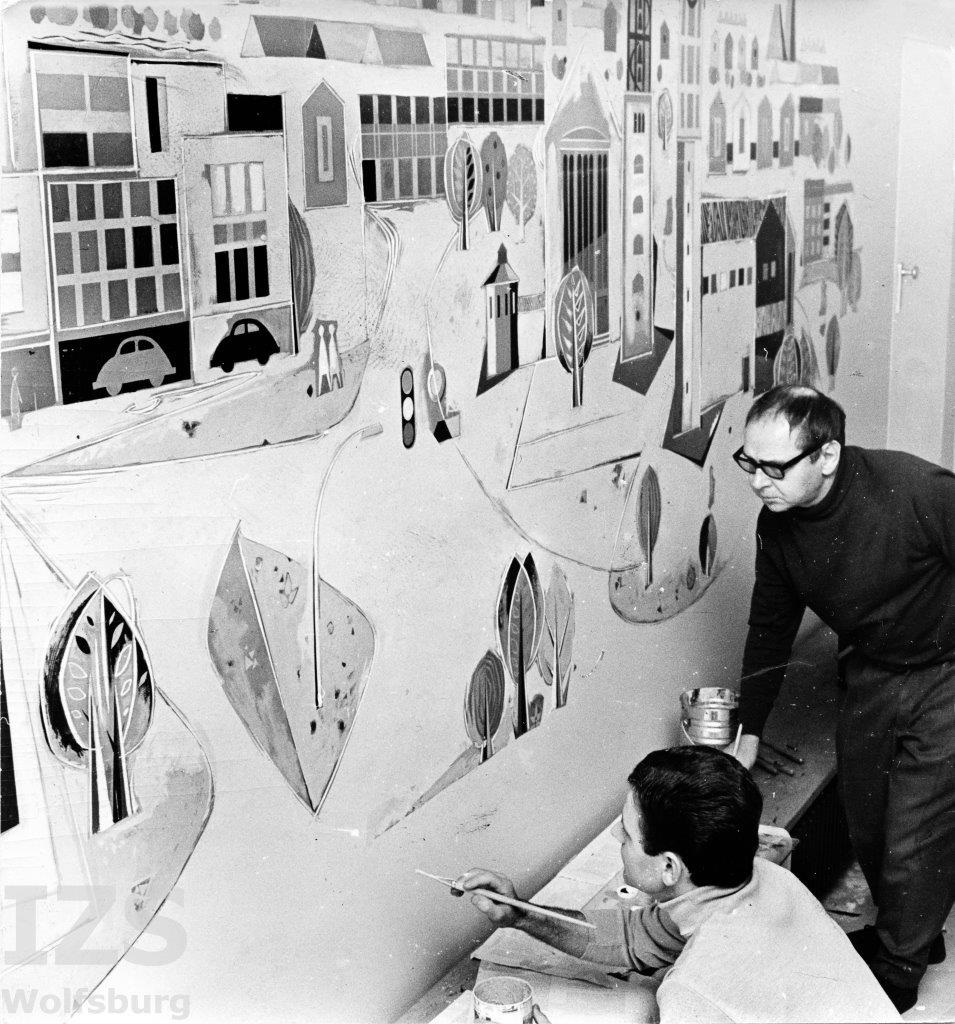
The Peacock Fountain in Wolfsburg's Bahnhofpassage at Nordkopf is one of the best-known sculptures in Wolfsburg's cityscape. In 1961, the Dresden painter Paul Kurt Bartzsch was commissioned to create it by the City of Wolfsburg's culture committee. Since then, the fountain has had an eventful past, having had to change its location several times. Far less well known, however, is a mural by the artist that adorned the walls of a conference room in the basement of the town hall, which was inaugurated in 1958. The mural was probably commissioned by the town as part of the interior design of the new town hall.
Early Forms, Tony Cragg (1997)
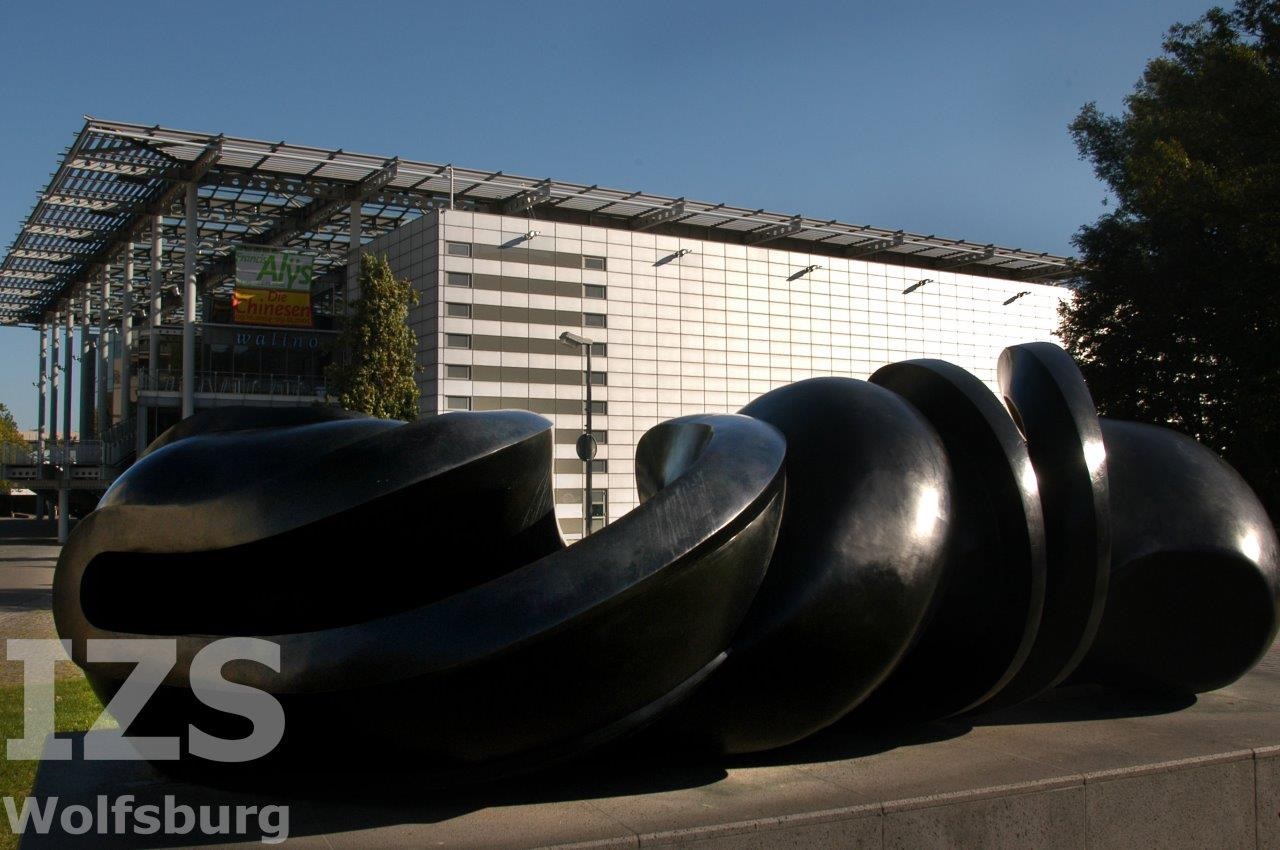
"The large-format work impresses with its harmonious forms and, in my opinion, would be very suitable for setting a striking accent for art in public spaces in Wolfsburg, also as part of an art axis through the city center." With these words, Hans-Joachim Throl, a member of the City of Wolfsburg's Art Advisory Council, assessed the proposal to purchase the sculpture Early Forms by British sculptor Tony Cragg in 1997 (Fig. 1). During the debate about the installation of the sculpture, the FDP councillor acted as Cragg's advocate and champion of a new urban model that should be characterized by art and technology."
Council committee, Horus Engels (1958)
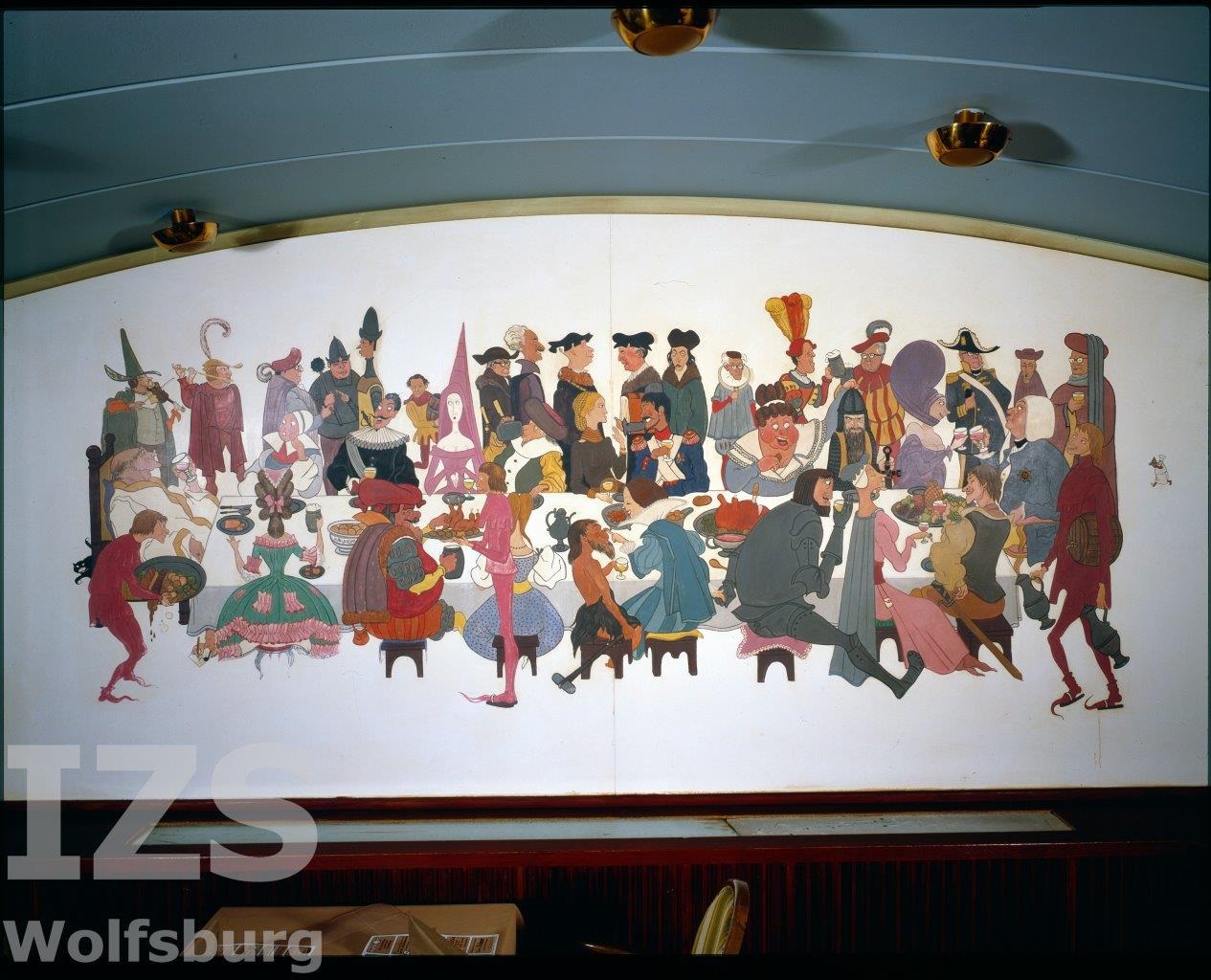
Hardly any other artist is represented in Wolfsburg's urban space with his works as much as Horus Engels. Whether with the ram's head, the colloquial name of the fountain sculpture in the municipal VW swimming pool, the mural The Postman on the façade of the former post office building on Brandenburger Platz or the fairy tale pictures, a ten-part cycle with depictions of various fairy tales from the world of the Brothers Grimm in the Leonardo Da Vinci Comprehensive School - his works are usually visible in central locations in the city.
Tube fountain, Rolf Hartmann (1977)
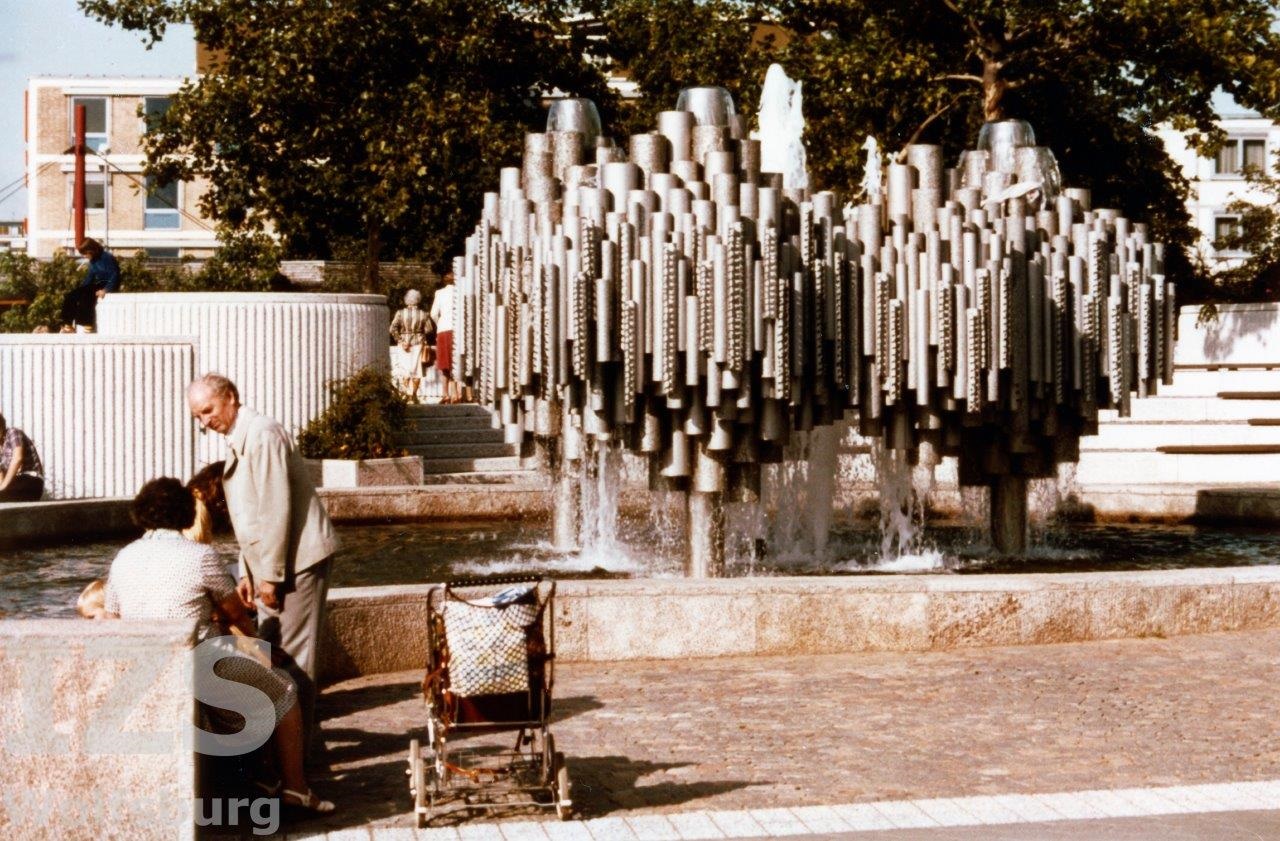
"For Rolf Hartmann, it was visibly an exciting hour in his life, because his art now forms a focal point in the city." -__-0000-__- With these sensitive words, the Wolfsburger Allgemeine Zeitung described the day the tubular fountain was installed in front of Wolfsburg's town hall in the summer of 1977 (Fig. 1). -__-0001-__- There, the three-part bronze construction stands in a circular water basin in close proximity to Hartmann's bronze 'Grapschhand', as his first fountain on the town hall square is popularly known.
Giraffe, Sina Heffner (2009)
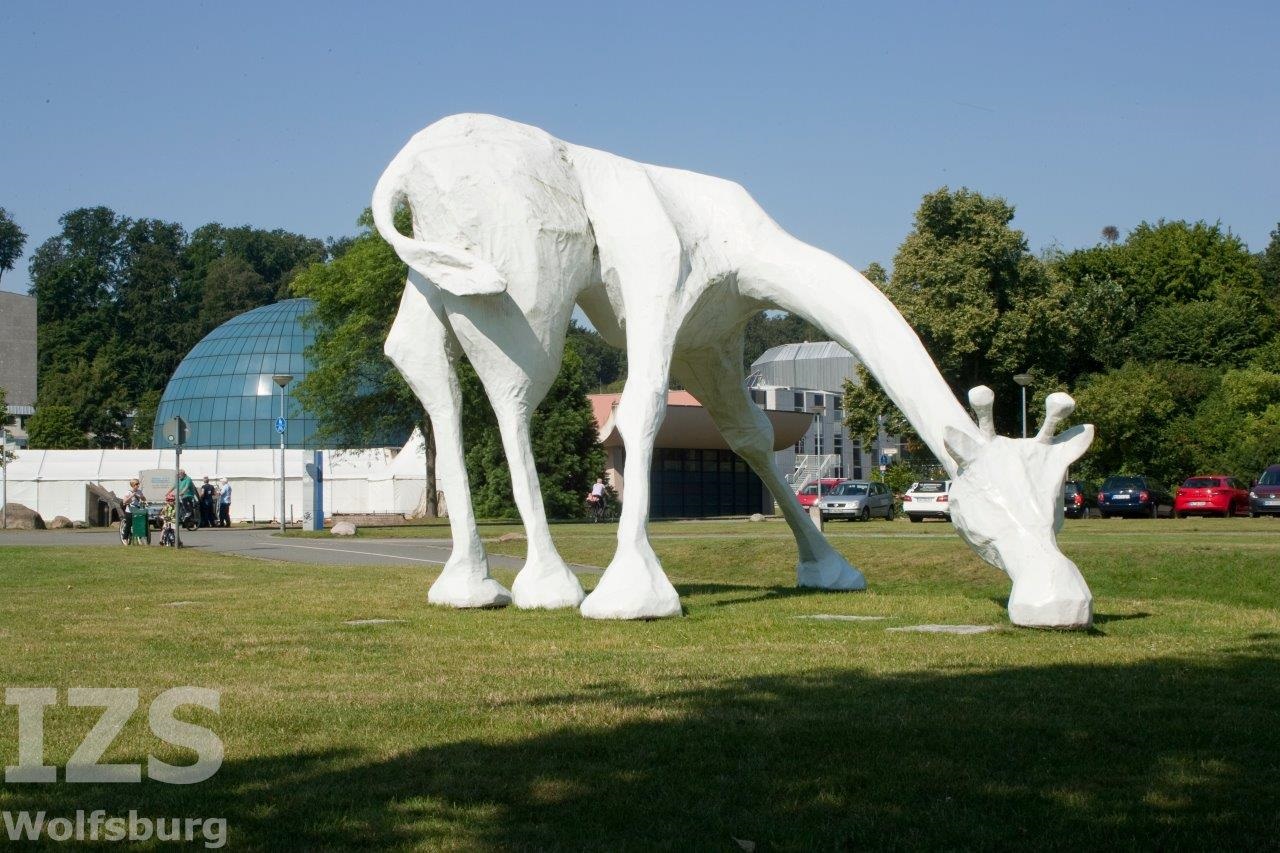
Sina Heffner, born in Bielefeld in 1980, studied fine art at the Braunschweig University of Art between 1998 and 2004 and graduated with a diploma. In 2005, the sculptor was a master student of Prof. Thomas Virnich. Since then, she has received scholarships from the German National Academic Foundation and the Worpswede and Stuhr-Heiligenrode artist residencies, as well as numerous prizes such as the Gustav Weidanz Prize (Halle an der Saale) and the Gifhorn City Art Prize.
Photo wall, Heinrich Heidersberger (1965)
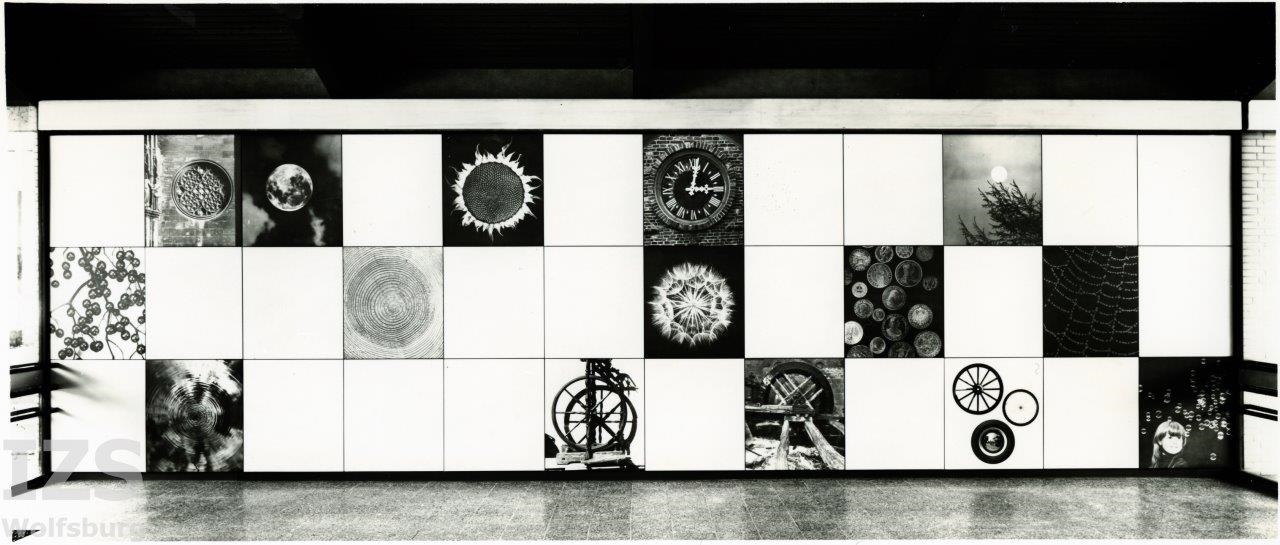
Heinrich Heidersberger is considered the most important photographic chronicler of the city of Wolfsburg. He portrayed the city in Lower Saxony at the height of the 'economic miracle' and during its metropolitan development. As a founding member of the Schloßstraße 8 artists' group, the photographer shaped the city's awakening cultural life from the very beginning. In addition to his nationally acclaimed volume Wolfsburg. Bilder einer jungen Stadt from 1963, which brought the city nationwide attention, the photographer also published less prominent works such as his images in a brochure about St. Mary's Church in Old Wolfsburg.
Seraph 2000, Bernhard Heiliger (1972)
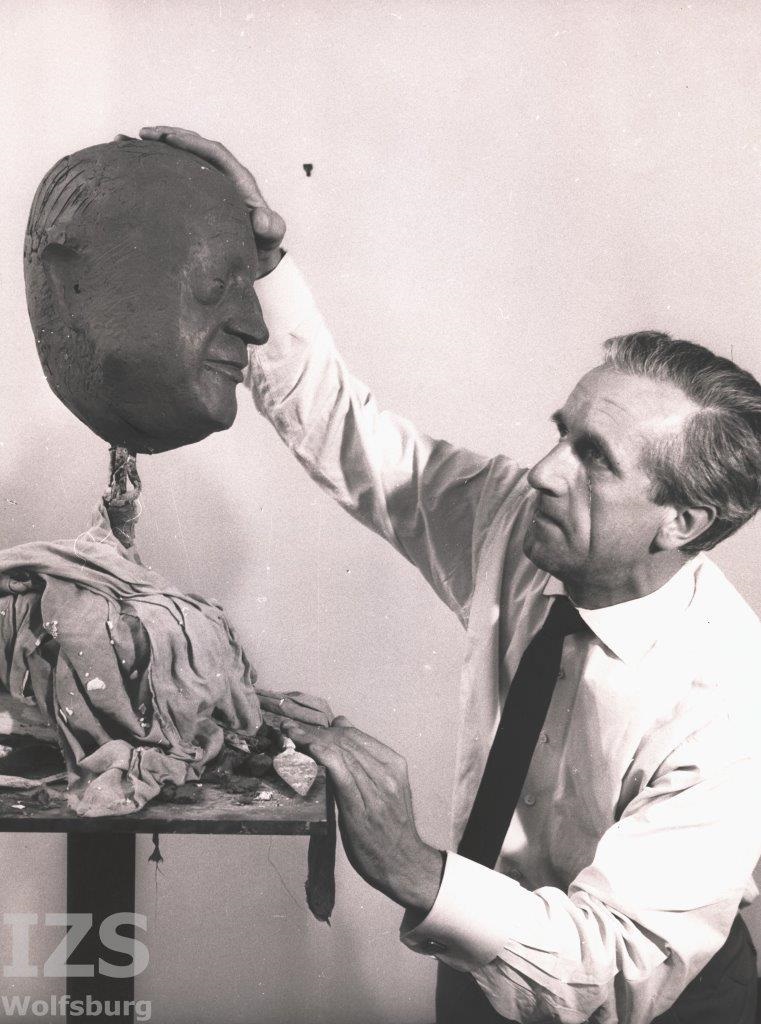
"The theatrical experience must begin here even before the performance," states the competition program for the construction of a playhouse on Wolfsburg's Klieversberg with reference to the entrance hall of the theater to be planned. It was not only the stage or the auditorium that was to become a place of experience for visitors to the theater. Rather, the entrance to the building should be experienced as an autonomous space as soon as you enter. The seven expert judges, led by architect and urban planner Werner Düttmann from Berlin and architect Werner Kallmorgen from Hamburg, received extensive submissions from seven architects and architectural teams from Finland, Denmark and Germany, which included models, sections and floor plans, as well as designs for the exterior and interior of the theater building.
Playground sculpture, Jochen Kramer (1979)
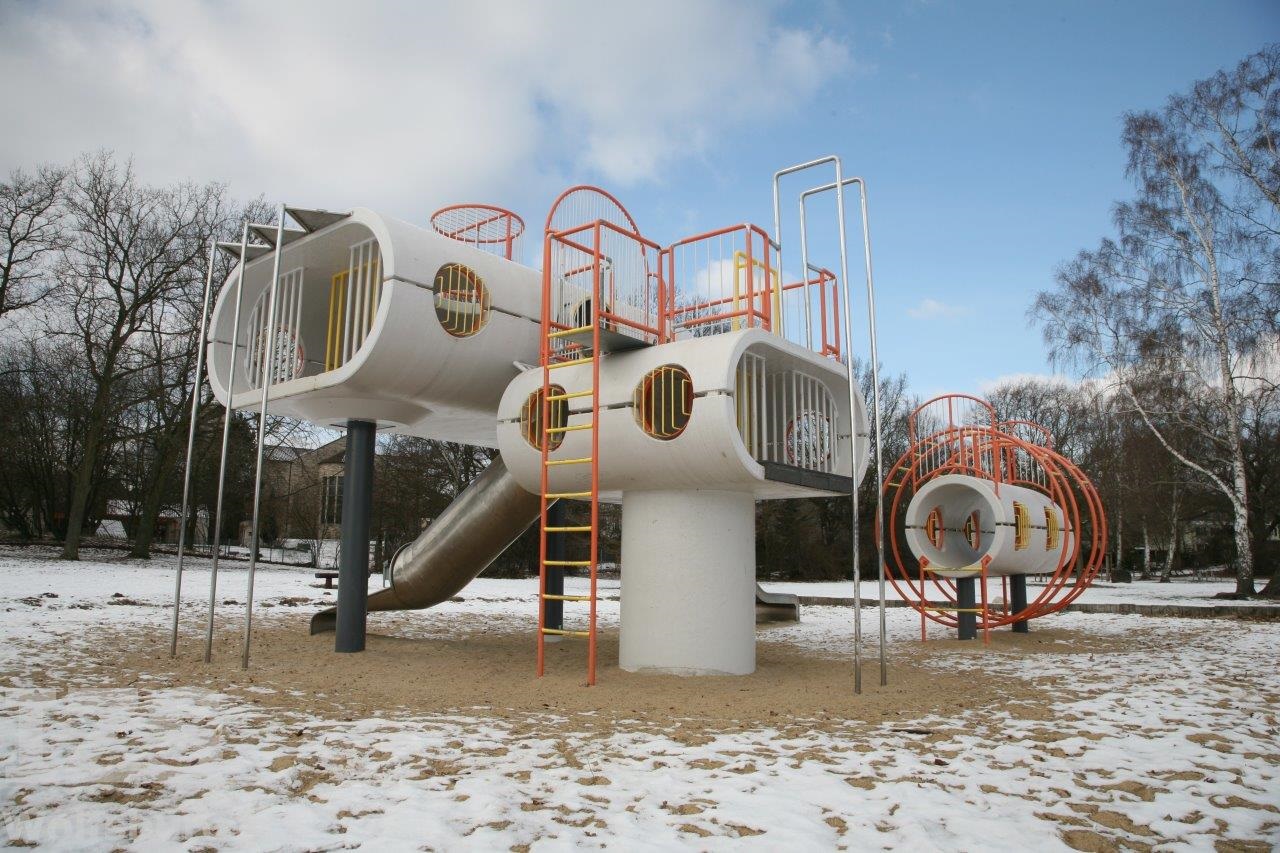
"16-year-old Heike Ehlers looks up in disbelief at the play sculpture by Wolfsburg sculptor Jochen Kramer. Flashing steel pipes, dull, tired concrete, decorated with countless slogans and graffiti. The object was erected at Schillerteich over four years ago. At the time, there was a hail of letters to the editor, complaints to the city's citizens' hotline and energetic inquiries from distraught councillors. 'It doesn't fit in here', the schoolgirl stated succinctly.
In short: Jochen Kramer's playground sculpture at the Großer Schillerteich in Wolfsburg was anything but popular in the first few years after its installation.
Wolf Group, Peter Lehmanns (1981)
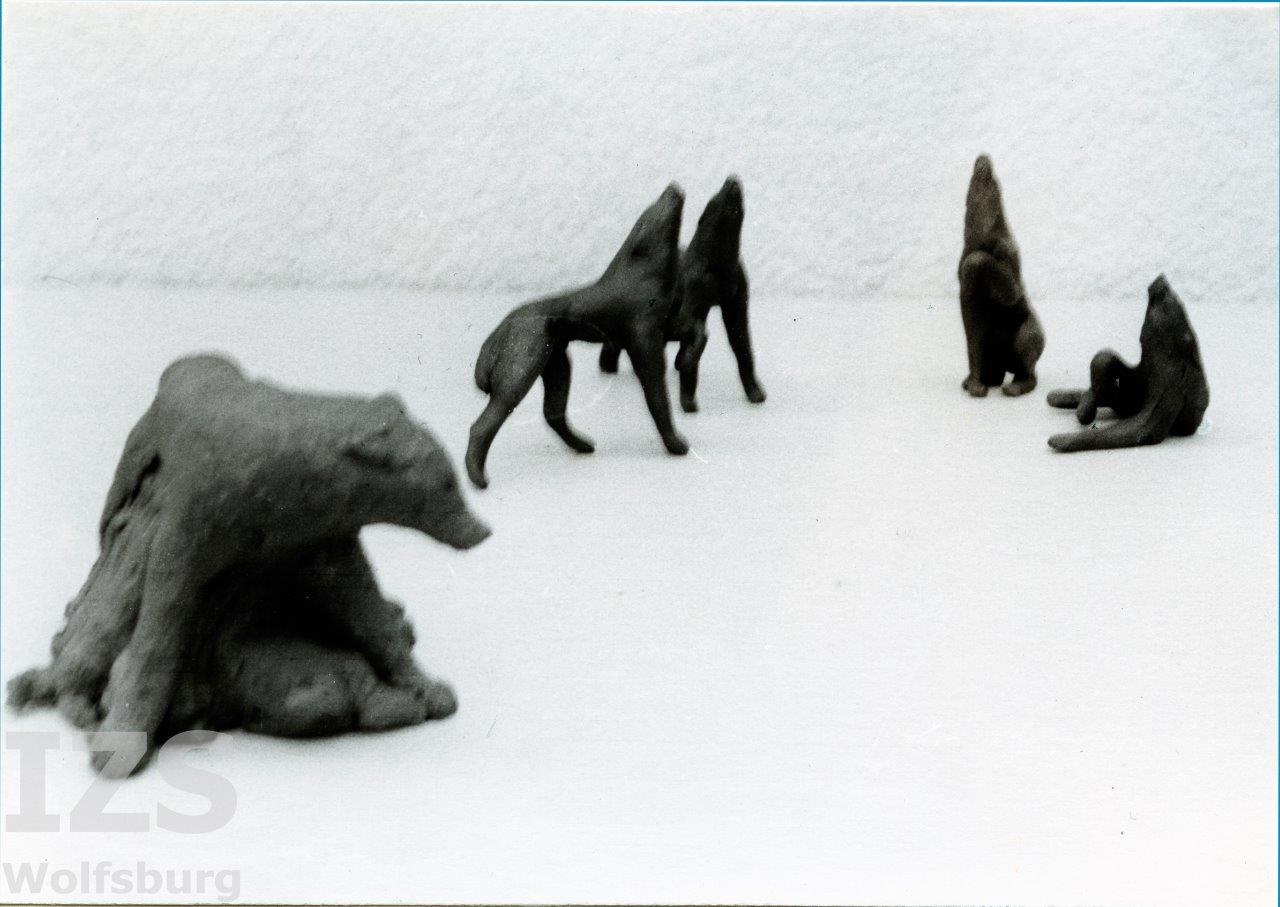
When the city decided to transform its main street into a pedestrian zone in the 1970s, art in particular was to make a decisive contribution to the hoped-for quality of the cityscape. The artists' collective Schloßstraße 8 was to support the city as an advisory body for the implementation of the artistic plans. The aim was to show "active art" that was to be playable, comprehensible and stimulating at the same time, according to a brief description for the artists.
Loads and Carrying, Joseph Henry Lonas (1961)
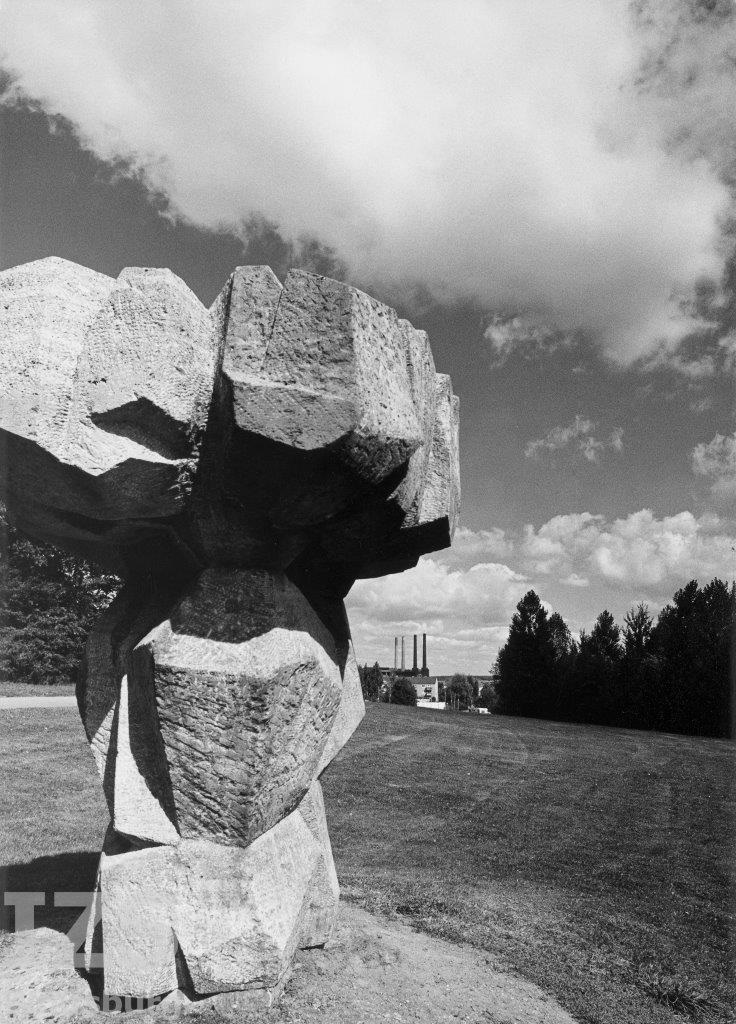
If a commentary in the Wolfsburger Nachrichten is to be believed, the sculpture Lasten und Tragen by the American artist Joseph Henry Lonas established itself in the collective memory of Wolfsburg's urban society as a "molar" in the course of the 1960s (Fig. 1). Erected on the eastern slope of the Klieversberg in the fall of 1962, the stone sculpture is one of the oldest sculptures to have been placed in public spaces by the municipality. Due to its mushroom-like shape and a height of three meters, the twelve-ton free-standing sculpture caused quite a stir at the time.
Wall reliefs, Rudolf Mauke (1970)
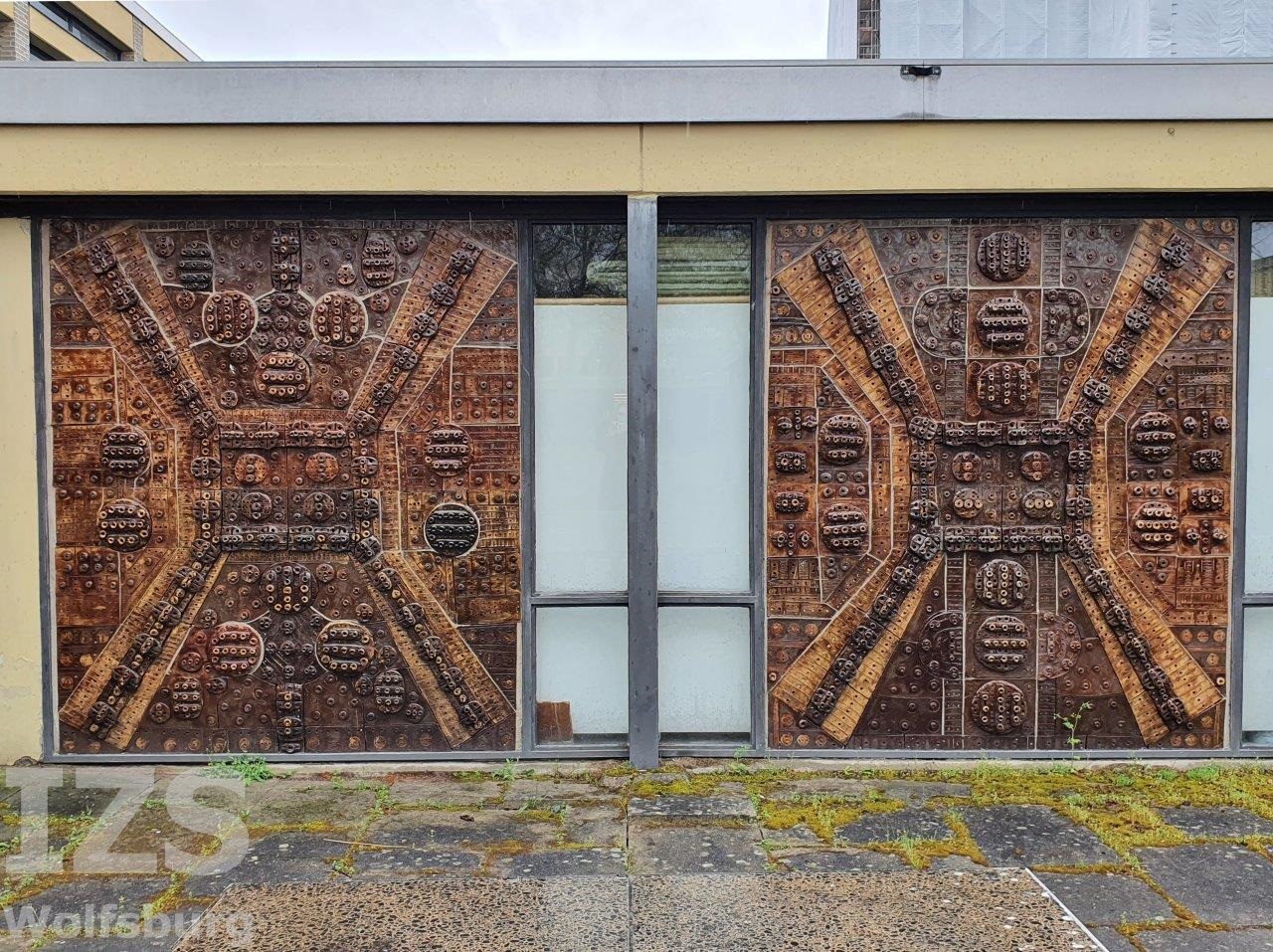
When the architect Rudolf Richard Gerdes was commissioned to build the Detmerode elementary school center, today's Bunte Grundschule, in the late 1960s, he was given the explicit task of contacting the Schloßstraße 8 artists' group to discuss the artistic design of the school. This is not surprising, as so-called art in architecture has become more important in larger construction projects since the beginning of this decade. Individual artists from the collective based in the castle had also previously been able to permanently install their works at various Wolfsburg schools.
Wall design, Helga Pape (1967)
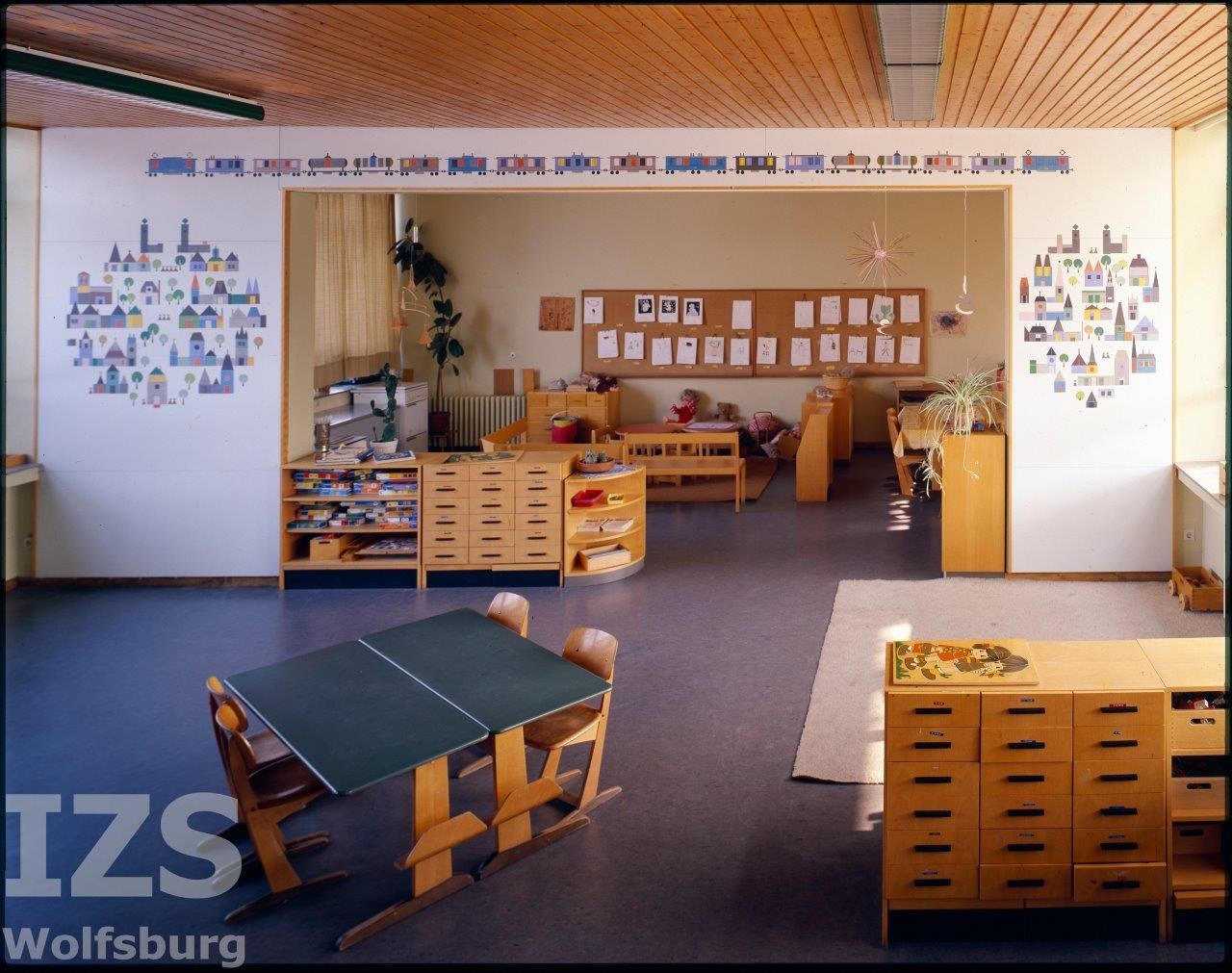
There is no universally valid set of rules that clearly defines what is considered art and what is not. It is literally in the eye of the beholder. Quite a few works of art have already been damaged due to this fact and the viewer's ignorance - usually anything but willfully. Sometimes it has even been an attempt at cleaning on the part of the cleaning staff with an unfortunate outcome. One of the most popular examples of this occurred in 1986, when the janitor of the Düsseldorf Art Academy unceremoniously removed the artwork Fettecke by Josef Beuys, who incidentally once made a guest appearance at the Porsche Hotel in Wolfsburg, from its exhibition location.
Sitting snake, Hans Schönfeld (1975)
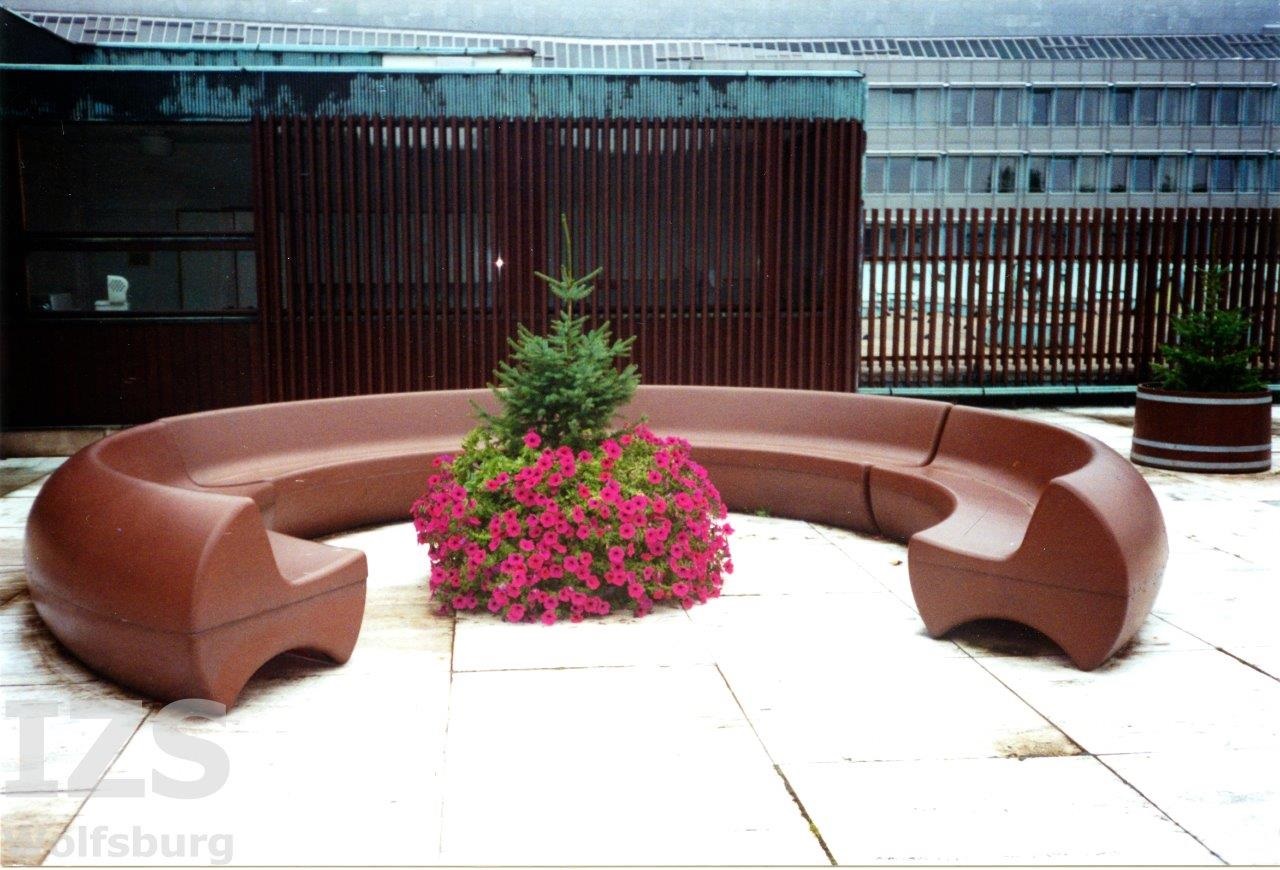
Resistance arose within the Detmerode population when the city council erected a seating snake designed by artist Hans Schönfeld in the heart of the district on the market square: "It may not be poisonous, but it poisons Detmerode's citizens' longed-for peaceful evening after work: the seating snake by Wolfsburg designer Hans Schönfeld," wrote the Wolfsburger Nachrichten in February 1975, just a few months after the sculpture was erected. The S-shaped seating sculpture made of plastic, consisting of a total of eight segments designed for resting and planting, as well as the U-shaped seating sculpture anchored next to it, were a thorn in the side of local residents.
Water games, Peter Szaif (1963)
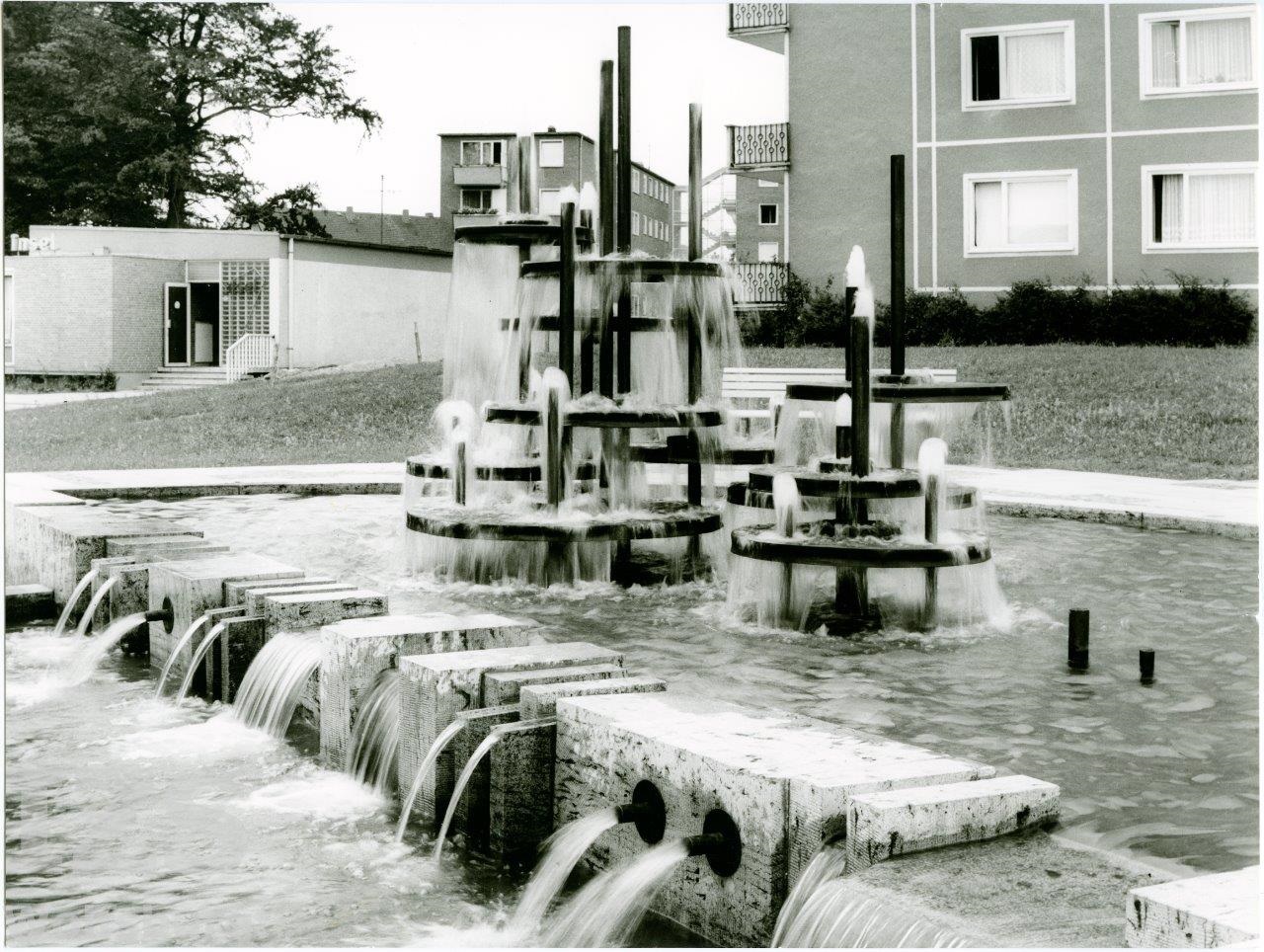
Peter Szaif, who was born in Timisoara, Romania, could justifiably be described as Wolfsburg's fountain specialist par excellence. In the 1960s, the artist designed no fewer than six large fountains, for example on the steps to the Heinrich Nordhoff comprehensive school or on Detmerode market square at the entrance to Alvar Aalto's St. Stephen's Church. The second work of this kind - the artist had previously created the fountain with the sculpture Mother and Child on Brandenburger Platz - is the fountain on Dunantplatz in Eichelkamp.
Stainless steel relief, Gerd Winner (1969)
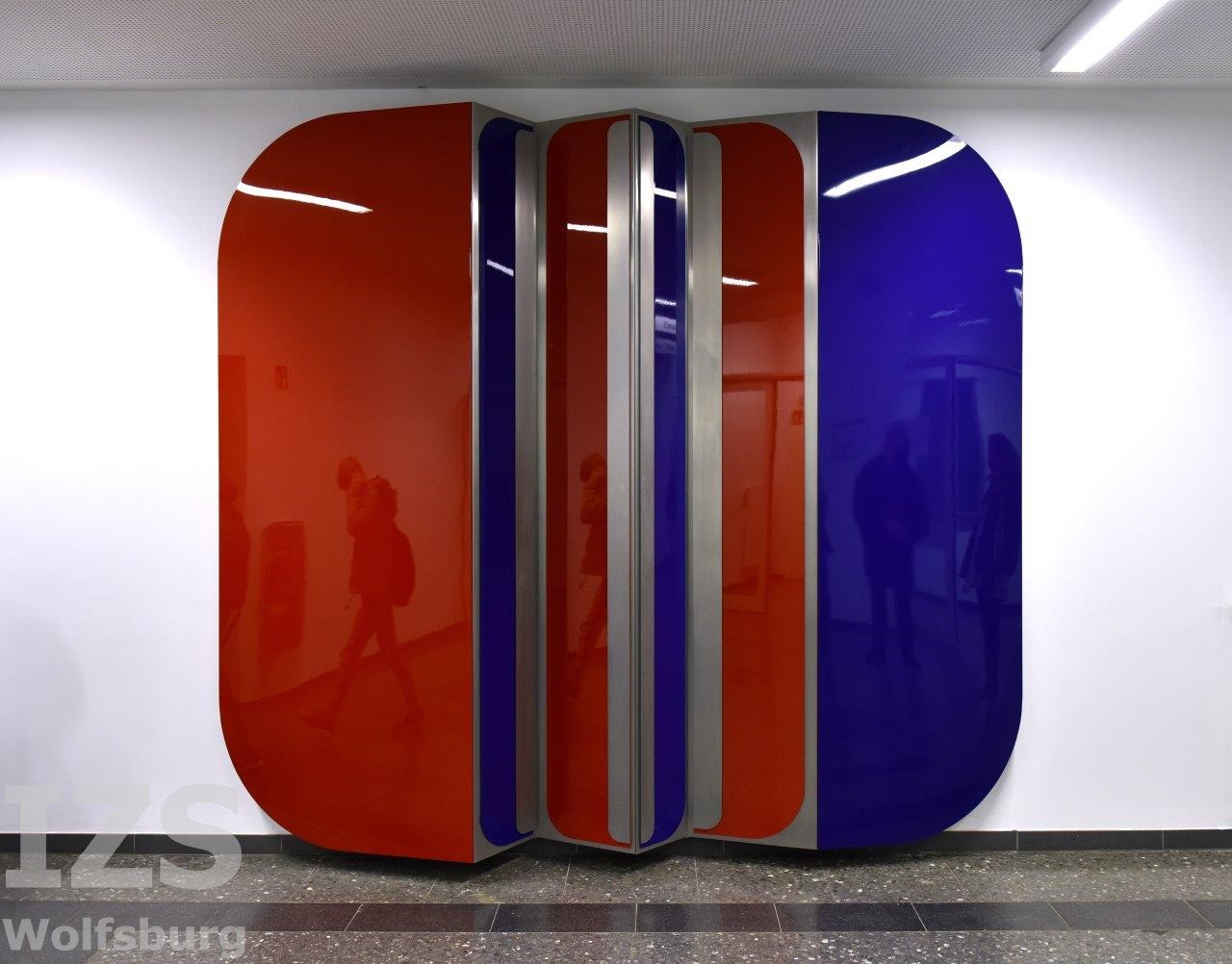
During the 1960s, the city of Wolfsburg endeavored in many ways to present itself as a city that was more than just open to contemporary art. In addition to the establishment of the art prize junge stadt sieht junge kunst, the founding of an art association and the establishment of a municipal art collection, numerous art purchases for public spaces are also an expression of this new field of activity in cultural policy. Art in architecture was no less relevant.
An internal city regulation from 1959 stipulated that for new municipal buildings, one percent of the total construction sum was to be set aside for artistic design.
